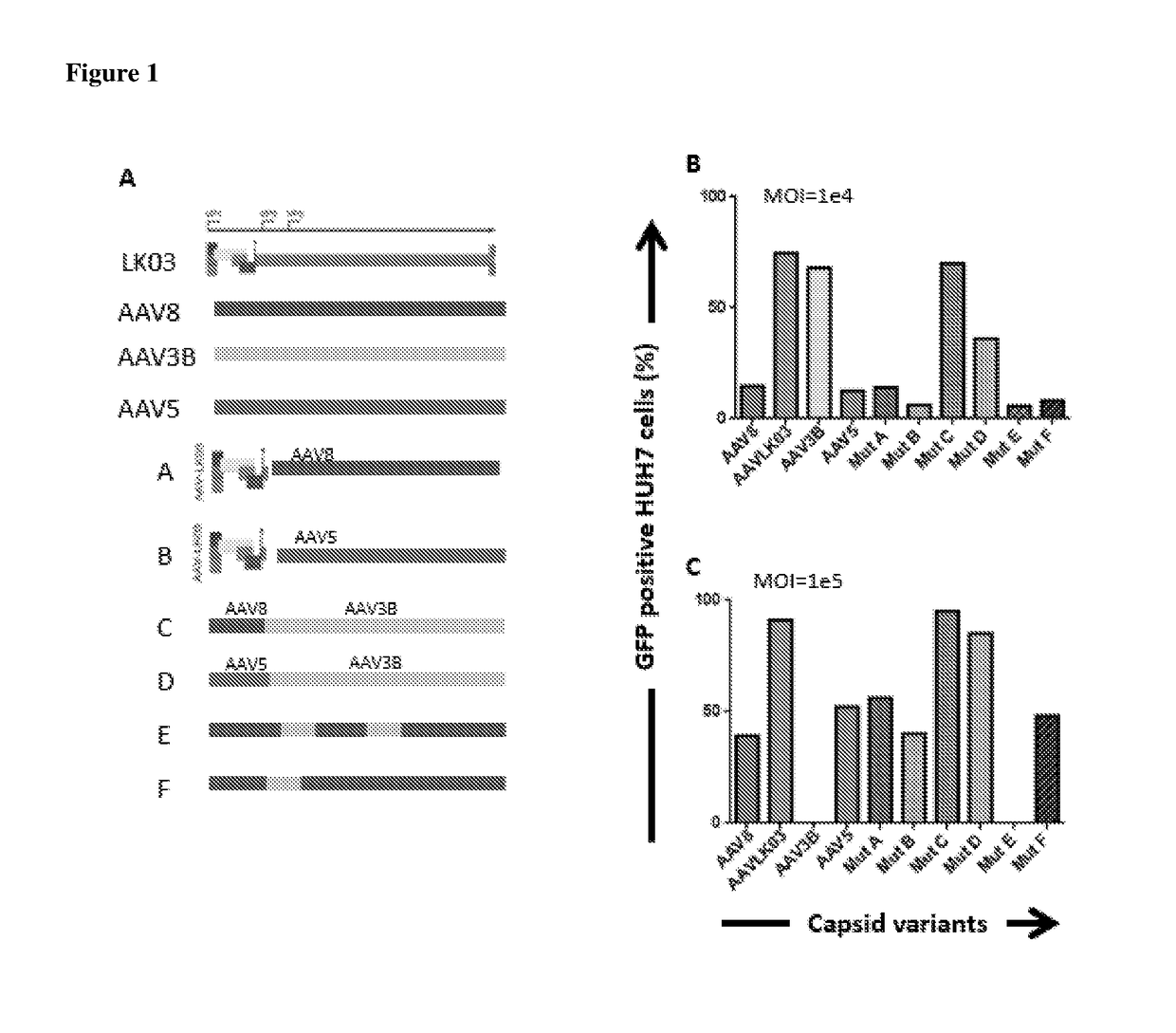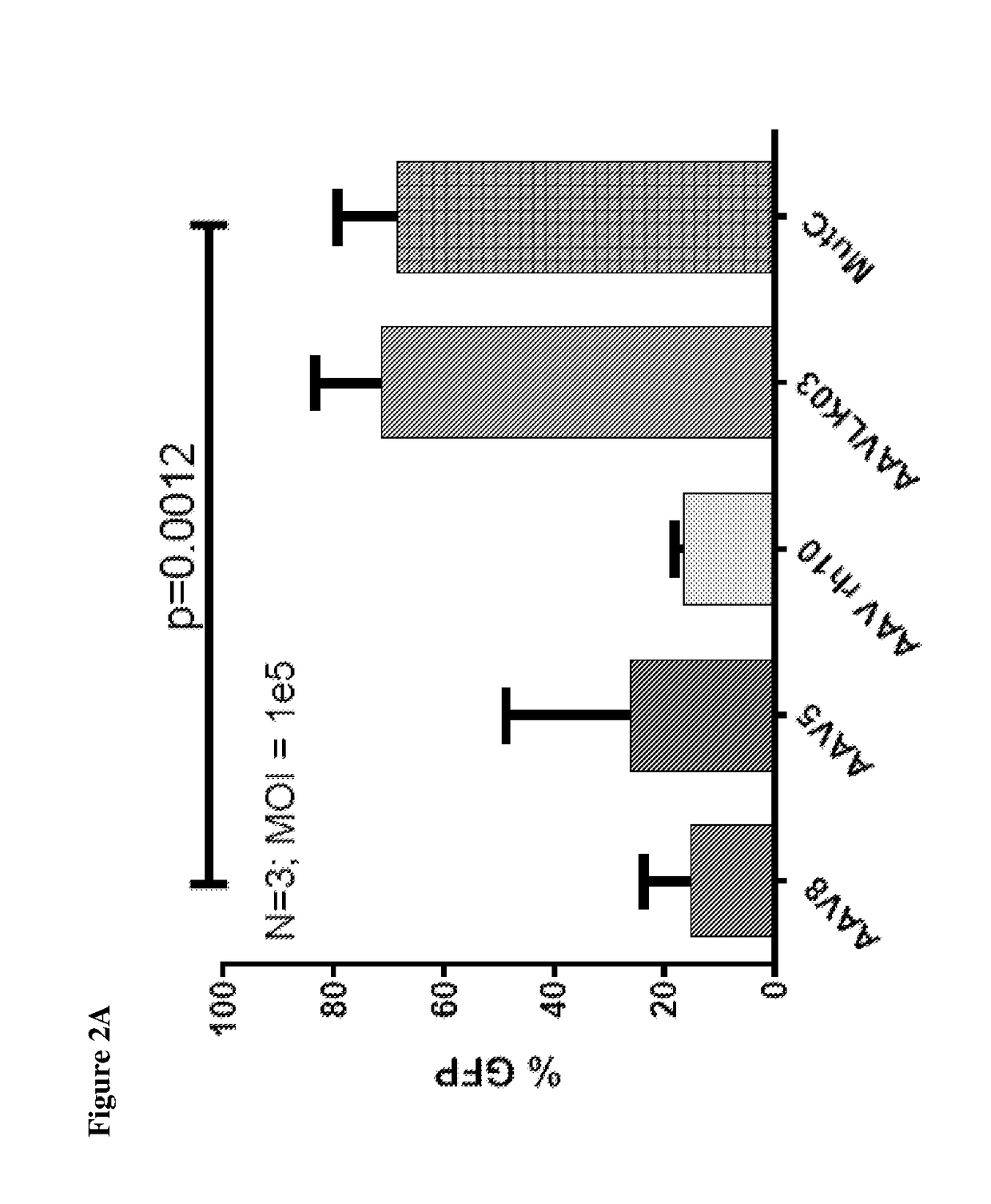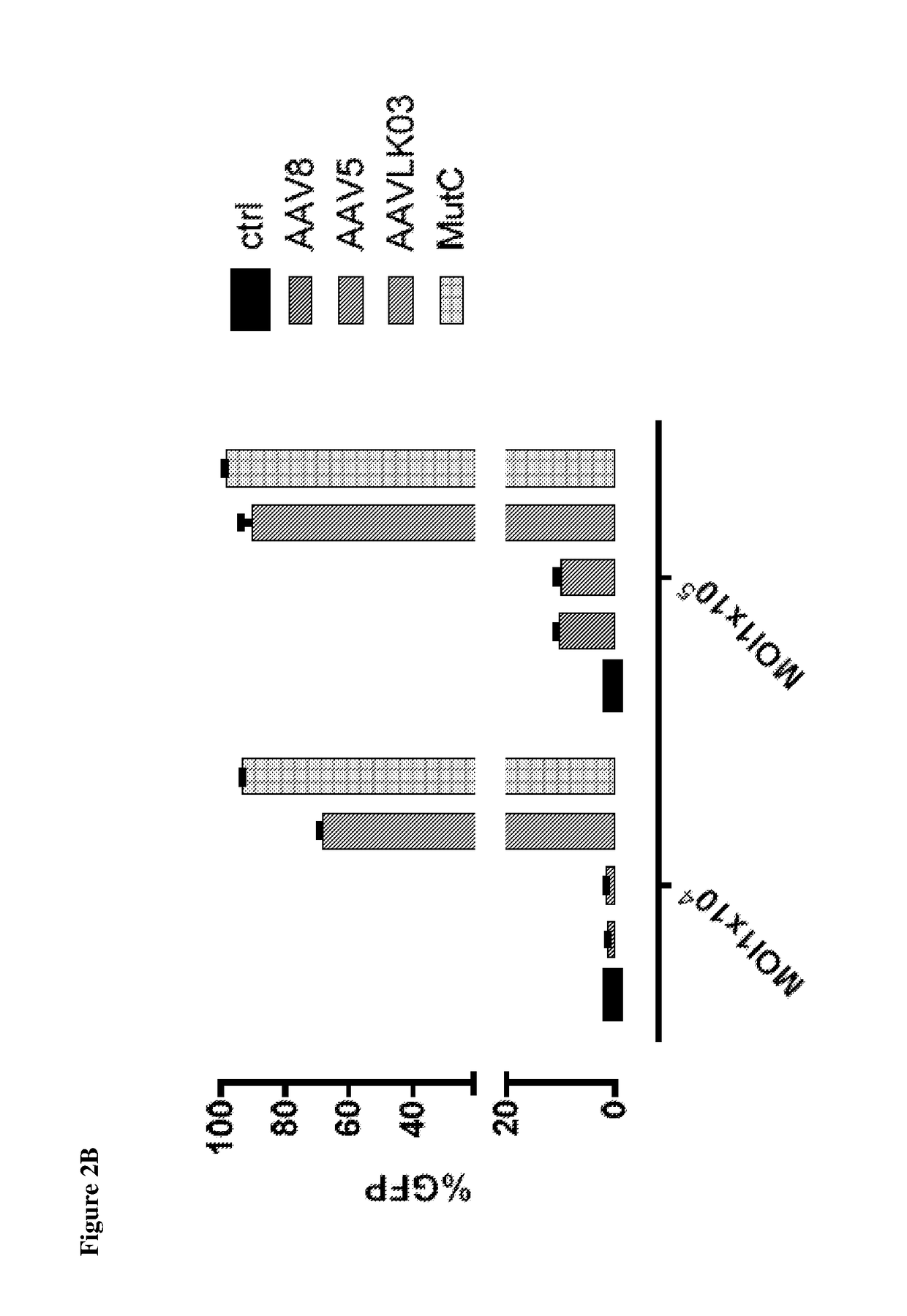Capsid
a technology of capsid and adenovirus, which is applied in the field of capsid, can solve problems such as undesirable side effects and association
- Summary
- Abstract
- Description
- Claims
- Application Information
AI Technical Summary
Benefits of technology
Problems solved by technology
Method used
Image
Examples
example 1
[0061]New hybrid capsids were generated by empirically swapping various domains from 4 different AAV capsids: (1) AAV8, (2) AAV5, (3) AAV3B, and (4) AAV-LK03 (see FIG. 1). The latter has been reported to transduce human hepatocytes more efficiently than the currently available naturally occurring AAV capsids. Notably, LK03 has >95% amino acid sequence homology with AAV3B. The capsid protein of the present invention is a synthetic capsid that has been developed by selection of motifs from wild type AAV capsids from serotypes 1-rh10. The VP2 and VP3 regions of LK03 were replaced with corresponding regions from AAV8 and AAV5 to generate mutants A (SEQ ID NO: 1) (Mut A) and B (SEQ ID NO: 2) (Mut B) respectively. In mutant C (SEQ ID NO: 3) (Mut C), a 146 amino acid region encompassing the AAV8 VP1 region was cloned upstream of the VP2 and VP3 domains of the AAV3B capsid. Similarly, in mutant D (SEQ ID NO: 4) (Mut D) the AAV5-VP1 region was cloned upstream of the AAV3B VP2 and VP3 regions...
example 2
[0064]Production of recombinant AAV vectors. AAV vectors were made by co-transfection of adherent HEK293 T-cells with a combination of plasmids consisting of the vector plasmid in which the EGFP reporter gene was under the control of CMV promoter, an adenoviral helper plasmid, and a packaging plasmids in which the respective AAV cap gene was downstream of AAV2 Rep gene under the control of the endogenous promoters. Vectors were purified using AVB column chromatography. Titration of all vectors was performed by qPCR assay as well as alkaline gel analysis.
[0065]In-vitro transduction. Liver cancer cell lines grown in monolayer were transduced with AAV at various MOI's followed by assessment of transduction efficiency using flow cytometry at ˜72 hours after gene transfer.
[0066]Primary human hepatocytes were obtained from Life-technologies and maintained in culture as per supplier's instruction. They were then exposed to AAV encoding GFP under the CMV promoter. Gene transfer efficiency w...
PUM
| Property | Measurement | Unit |
|---|---|---|
| Fraction | aaaaa | aaaaa |
| Fraction | aaaaa | aaaaa |
Abstract
Description
Claims
Application Information
 Login to View More
Login to View More - R&D
- Intellectual Property
- Life Sciences
- Materials
- Tech Scout
- Unparalleled Data Quality
- Higher Quality Content
- 60% Fewer Hallucinations
Browse by: Latest US Patents, China's latest patents, Technical Efficacy Thesaurus, Application Domain, Technology Topic, Popular Technical Reports.
© 2025 PatSnap. All rights reserved.Legal|Privacy policy|Modern Slavery Act Transparency Statement|Sitemap|About US| Contact US: help@patsnap.com



